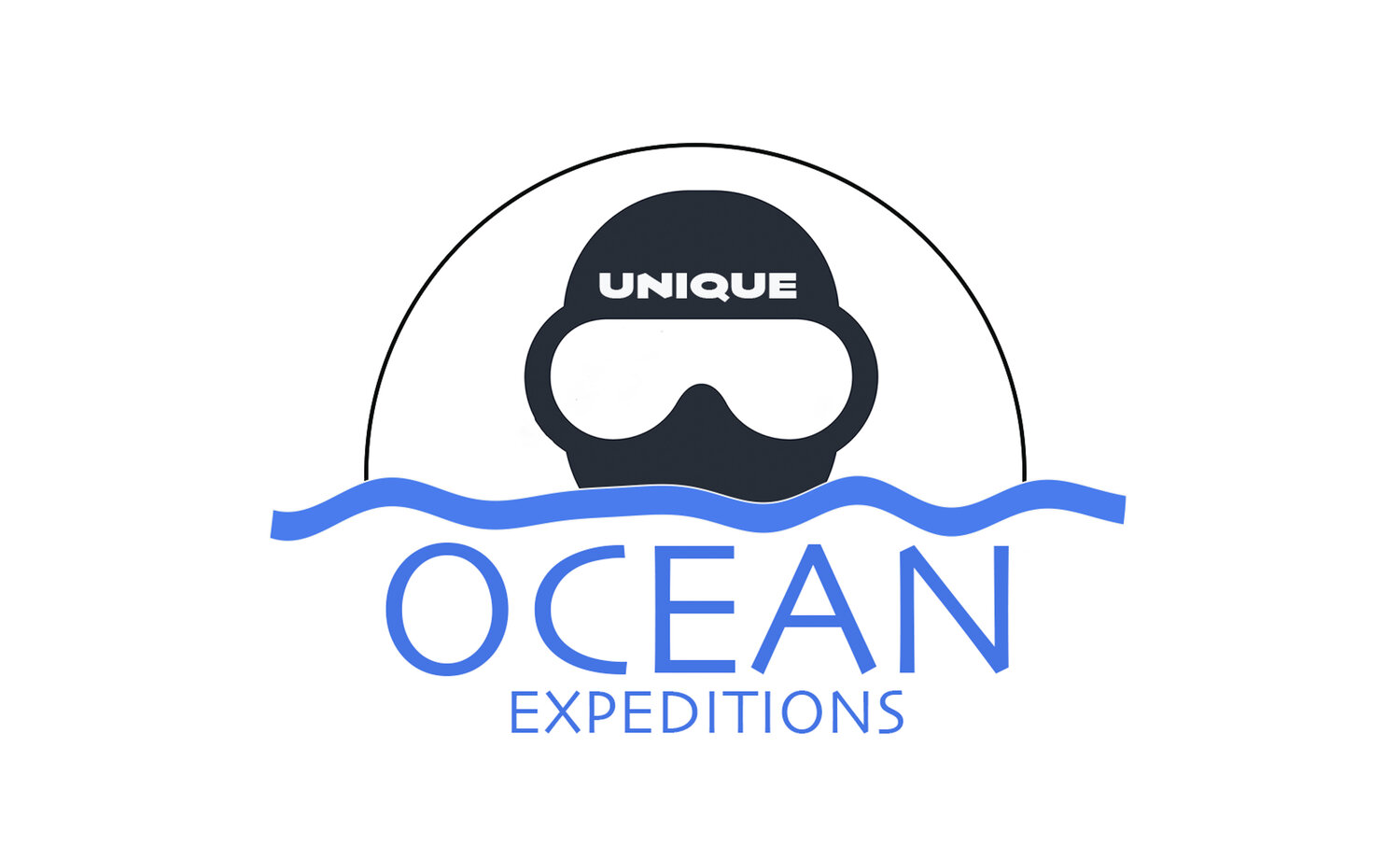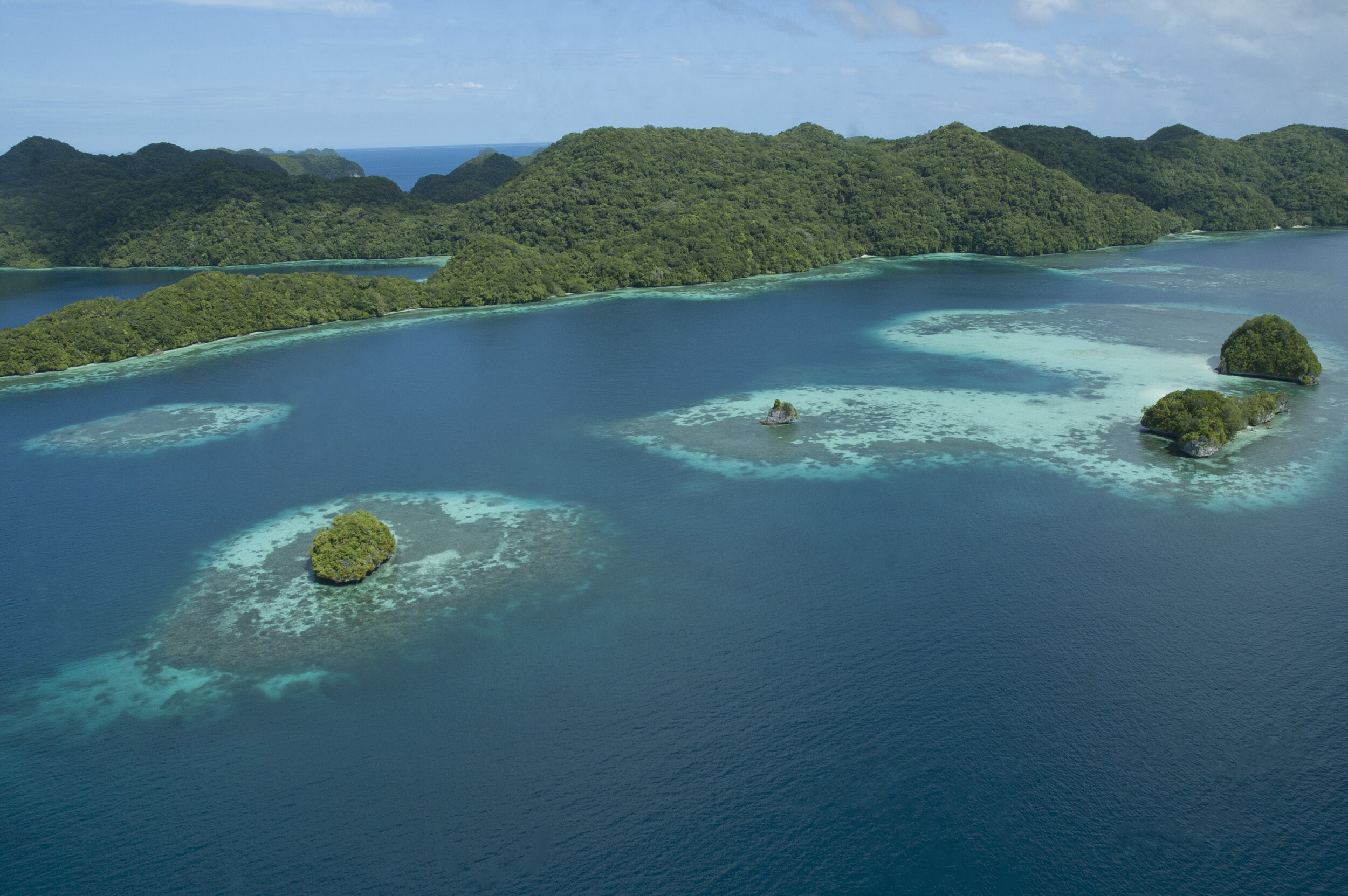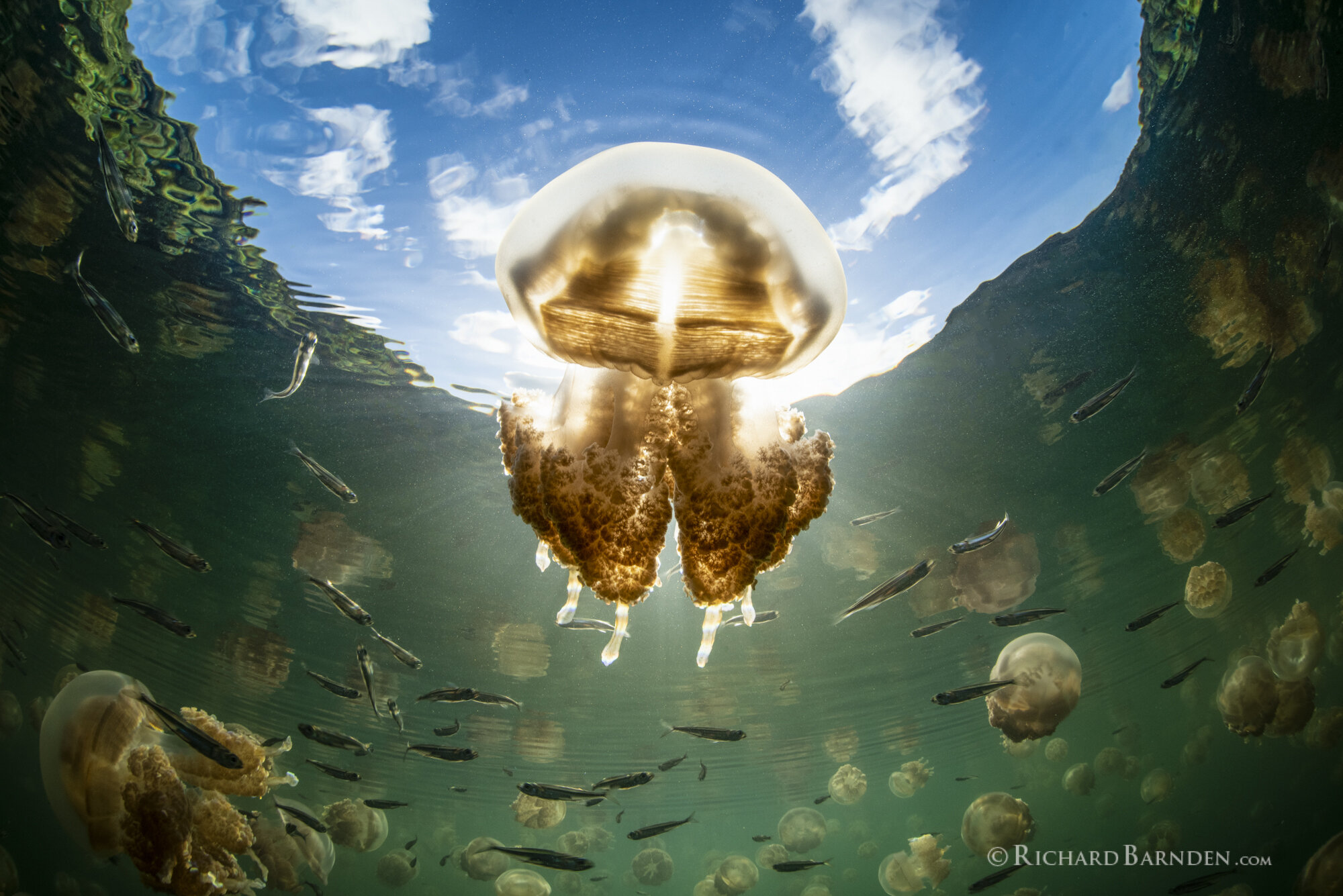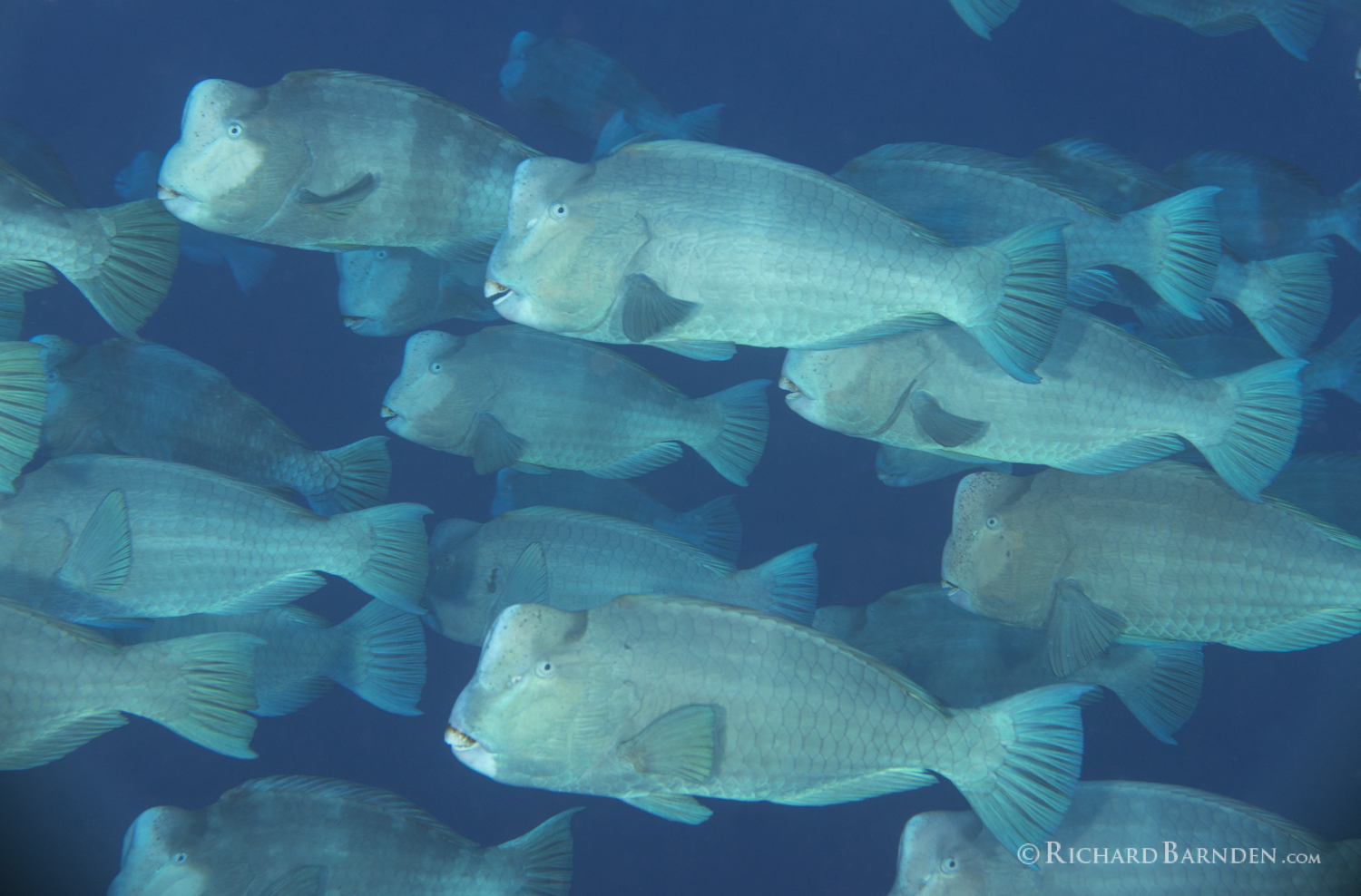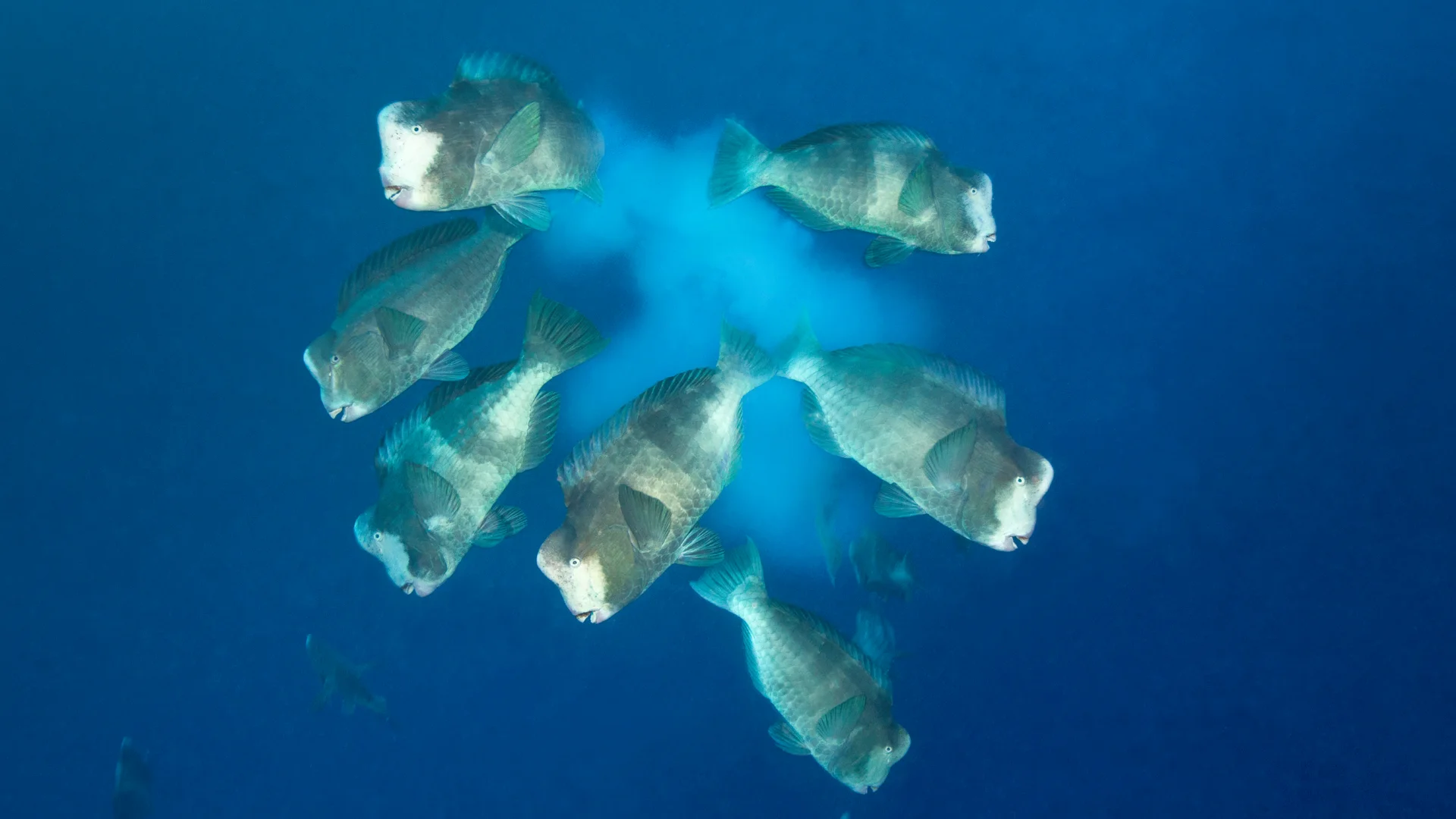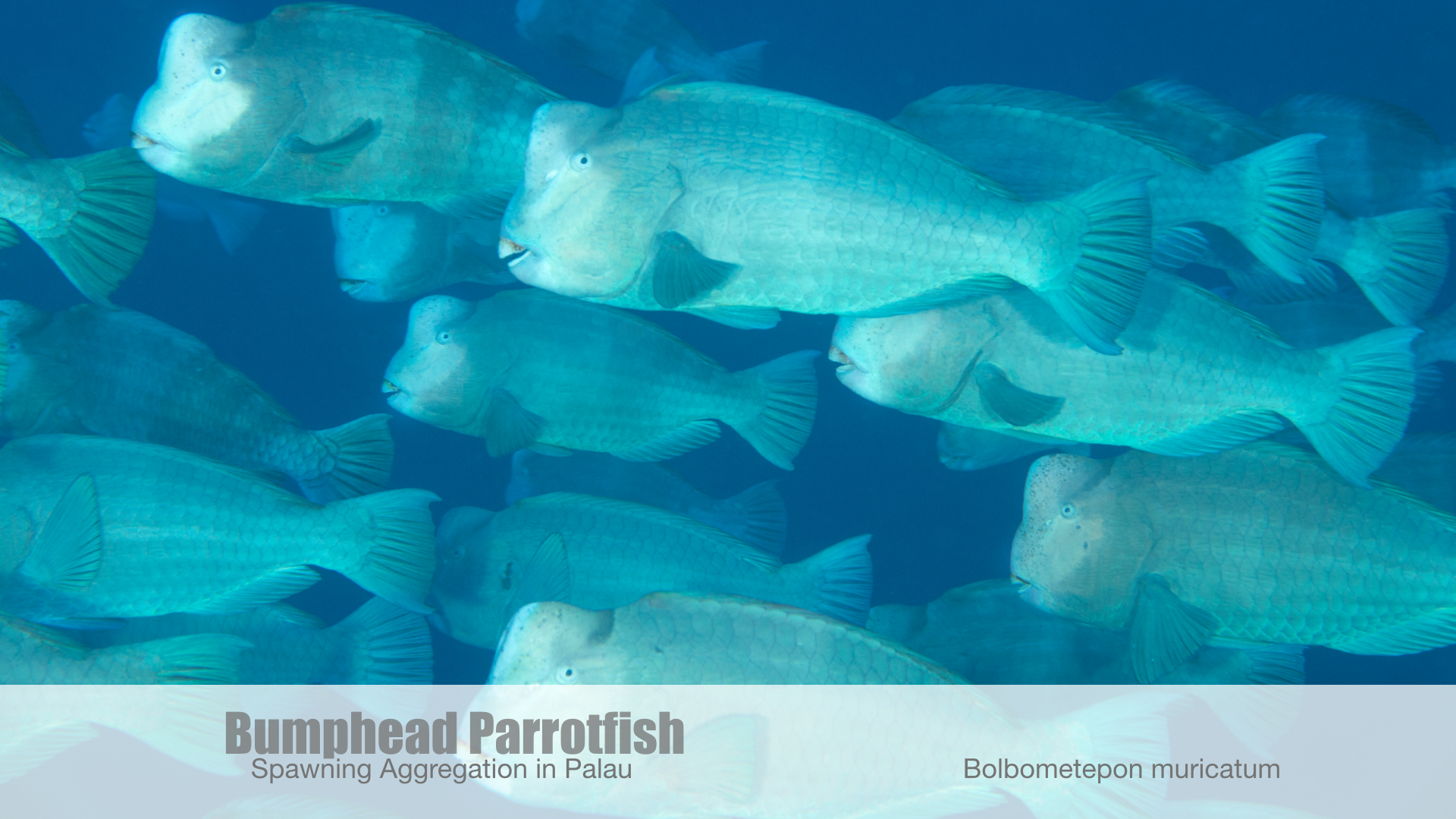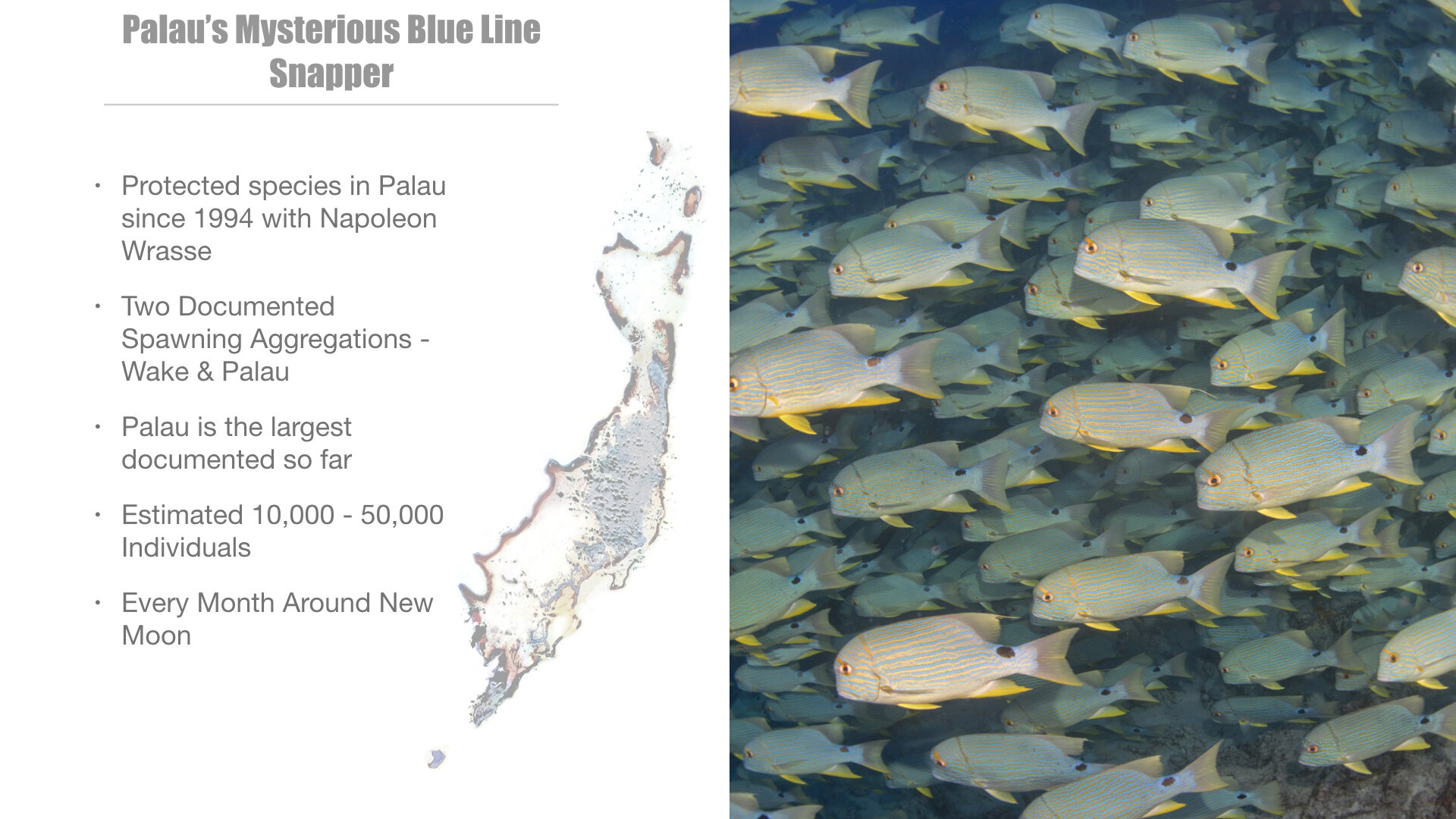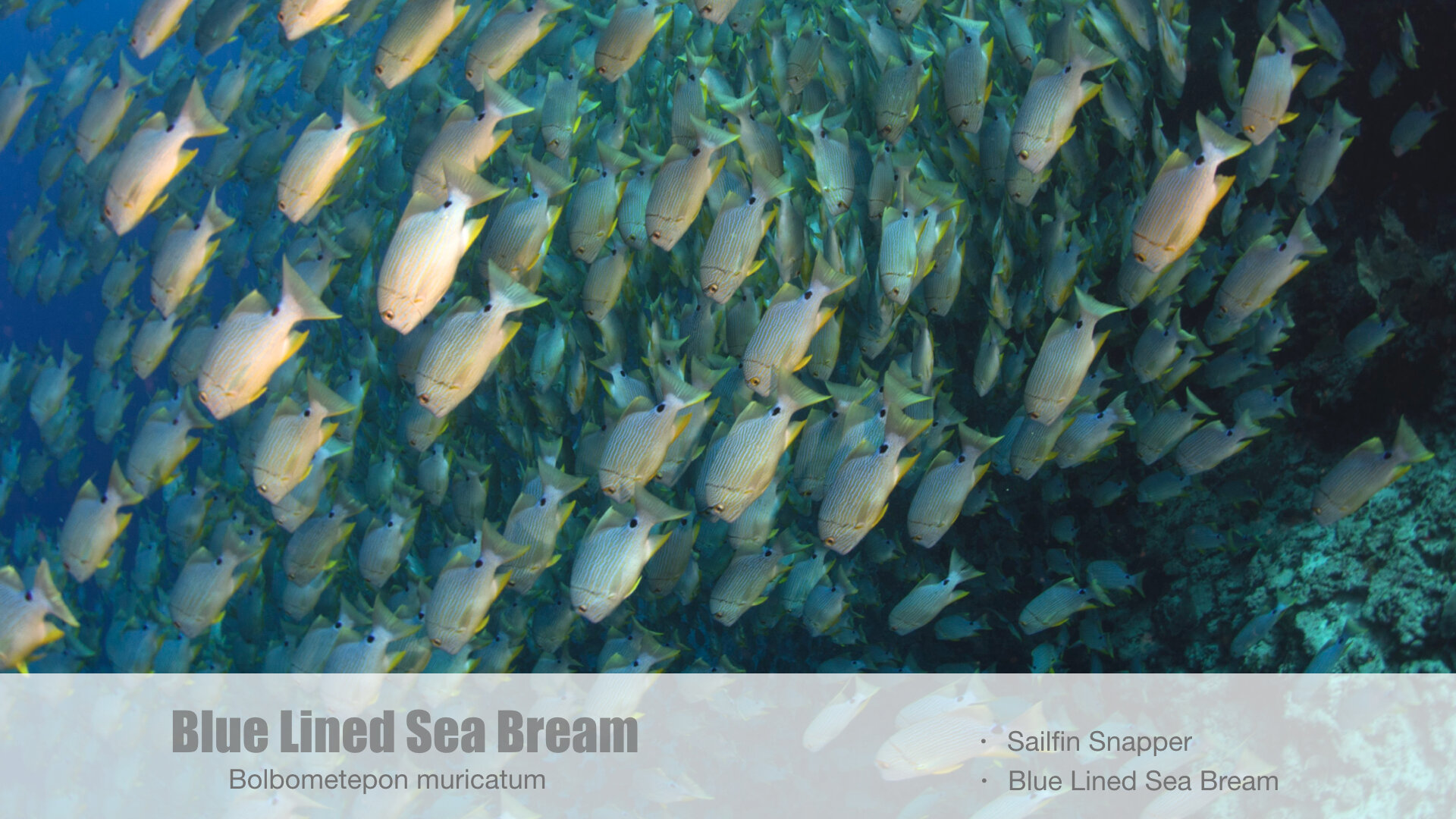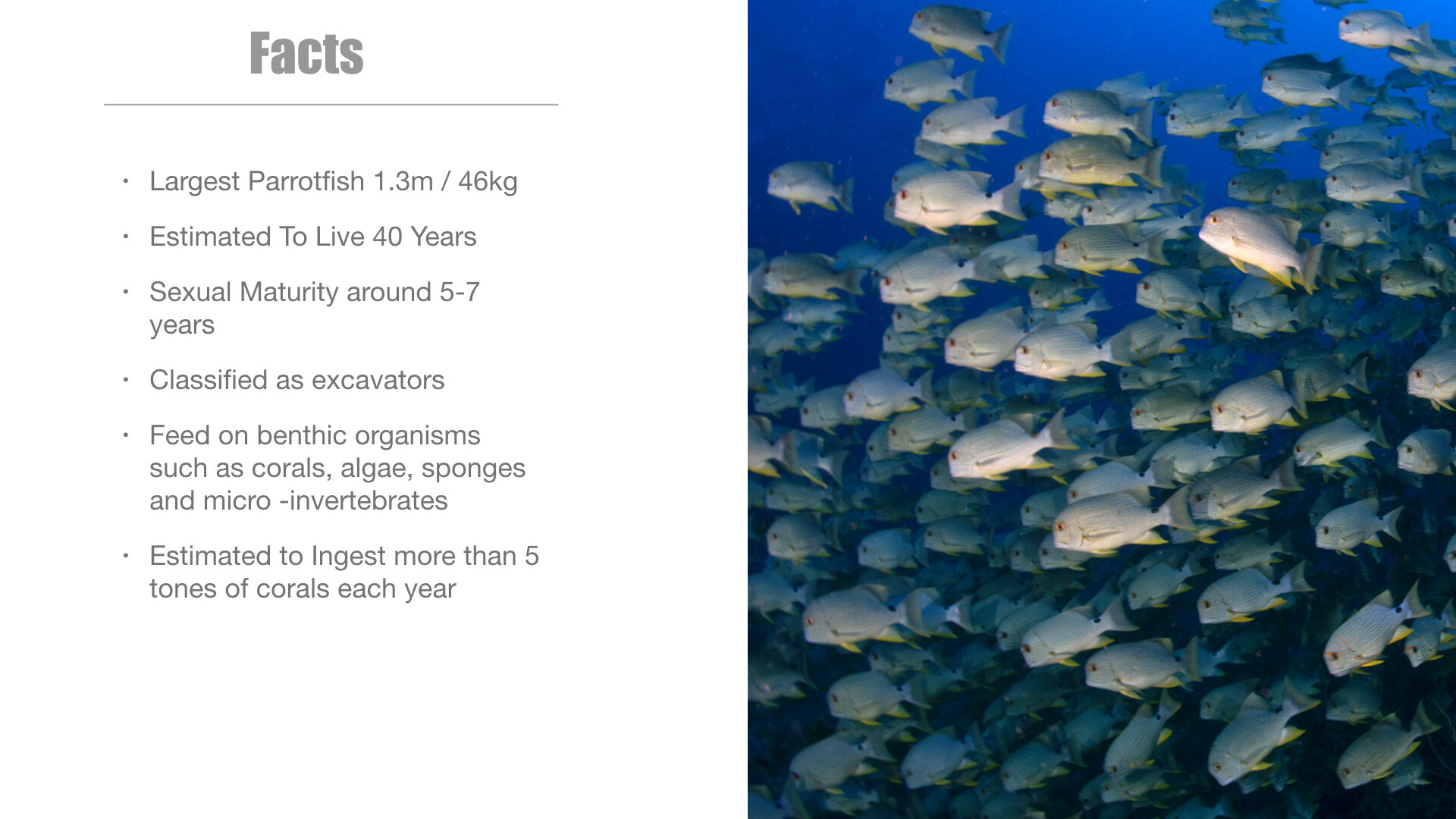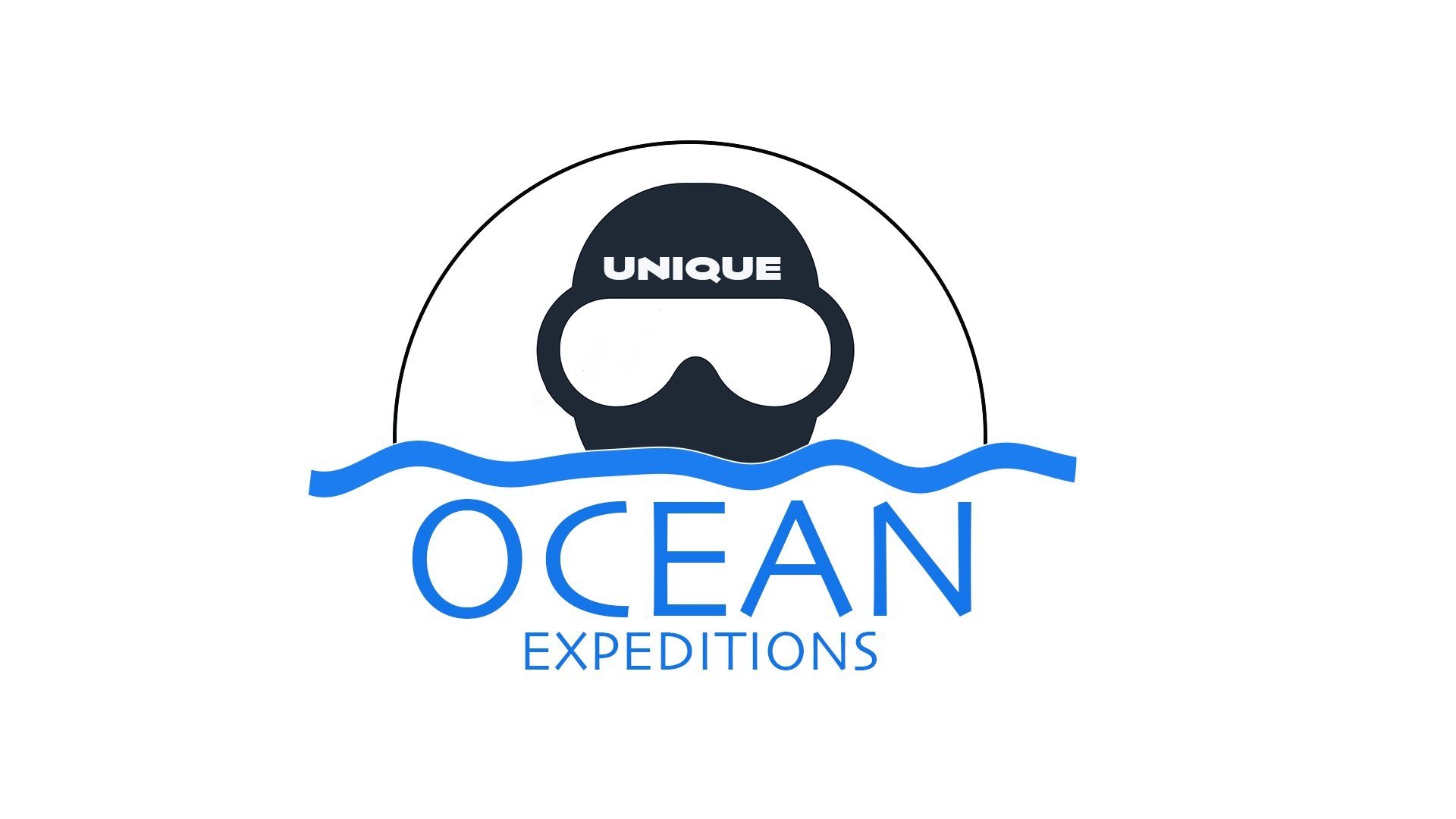PALAU
NORTHERN REEF EXPEDITIONS
THE EXPEDITION
Join our team at Unique Ocean Expeditions onboard Palau’s latest luxury live-aboard Solitude Gaia as we dive into one of the the only Palau live-aboard itineraries offering Palau’s northern to southern dive sites.
These Unique itineraries will offer divers the chance to explore sites in the north of Palau rarely visited on a regular ten day Palau dive trip.
These expeditions itineraries will cover the northern tip of Palau as well as diving in the southern lagoon and Peleliu Island in the south. These ten day expeditions will be perfectly timed around the New and Full Moon lunar cycles to witness unique spawning events with three days of northern exploration either at the start of the expedition or at the end depending on tidal and lunar activity.
PALAU
Most dive sites in Palau are world-class, with underwater features like blue holes, drop-offs, caverns, caves and channels. Visibility often seems endless and can go up to 100ft (30m) on good days. For wreck dives nearer to Koror though, do expect only 15-45ft (5-15m) of visibility.
Palau can be dived year-round but it tends to rain frequently during July to October. Water temperature is usually warm at a range of 81-86°F (27-30°C) and a 3mm wetsuit will suffice. However during some months its possible to have cold thermoclines dropping down to 65-70F (23-26C). For Land-based divers most of the dive sites are located about 45-60 minutes away by speed boat from Koror with the key areas for diving concentrated around the islands of Ngemelis and Peleliu.
With the strong currents of the Pacific Ocean sweeping through Palau, most of the dive sites are recommended for divers with experience. A reef hook is critical to have for several dive sites at the outer walls of the barrier reef, especially at the world-famous Blue Corner.
Shipwreck enthusiast will be spoilt for choice in Palau as there are many sunken remnants around Koror from World War II. Many are easily accessible and intact, and divers can take their pick from cargo ships, transport vessels, navy destroyers and Japanese Zero planes.
PALAU NORTHERN REEFS
Palau’s northern reefs and southern lagoon differ significantly in their ecological characteristics, physical structure and environmental conditions.
The northern reefs are more exposed to the open ocean, characterized by seep drop-offs, extensive barrier reefs and outer reef slopes. These areas often have higher biodiversity of pelagic species due to their proximity to deeper waters. These areas can also host a diverse coral and fish species, but the communities may differ from those found in more sheltered waters as that in the southern lagoon.
Palau is well known for it’s proactive conservation policies. The Palau National Marine Sanctuary, established in 2015, protect’s 80% of the nation’s waters, which include the northern reefs.
These efforts help maintain the health and resilence of the reef ecosystem. Just like the southern lagoon the reefs are important to the local Paluan culture and economy. Fishing tourism and traditional practices are all interwined with the health of these marine enviornments. The northern reefs are a focus for marine research, providing insights into coral reef ecosystems, climate change impacts and conservation strategies.
LIVEABOARD
LIVEABOARD ONLY EXPEDITION
M/V SOLITUDE GAIA
THE RATES
2025
10 NIGHTS
ALL CABINS ARE BASED ON SHARED OCCUPANCY
STATEROOM - 4 spaces - $7,050
UPPER DECK - 2 spaces - $6,600
MAIN DECK - 8 spaces - $6,100
INTERIOR CABIN - 4 spaces - $5,650
DATES
10 NIGHTS
ALL EXPEDITION AVAILABILITY
ITINERARY
PRICE BREAKDOWN
INCLUDES
All Days of Diving
All meals - Liveaboard Only
Transport to and from Diving Shop
EXCLUDES
International & Domestic Flight
Gratuities
Rental and Dive Gears
DIVE SITE INFORMATION
PALAU SOUTHERN LAGOON
WATER TEMPERATURE - 27c / 85F
WETSUIT - 3mm / 5mm
Blue Corner, one of Palau's most magical dives, is known for its sheer abundance of underwater life and reef configuration – the corner sticks out into the open ocean and then drops to the depths. Divers are dazzled by the incredible variety of fish, including barracudas, jacks, Napoleon wrasses and schooling grey reef sharks. Strong tidal currents render it a dive for the more experienced – a reef hook is a must to remain stationary in the current.
Blue Holes, may well be Palau's most scenic dive. It features four vertical shafts that open on the top of the reef and descend to a large cavern that exits on the outer wall at about 25m. Drifting down the shafts is a delight, especially when the sun is high. Dancing rays of sunlight flood through these openings and play with the blue hues. Schools of fish patrol the huge bottom exit, with dark blue ambient light as a background.
German Channel, Given the right set of circumstances, a dive at German Channel can be an unforgettable experience. Manta rays regularly visit this channel, which was blasted by the Germans to ease boat passage during their 1899 to 1914 Palau occupation. The mouth of the channel features some nice sandy areas with small cleaning stations, where mantas (usually two to five individuals) come to have parasites removed by little cleaner wrasses in less than 20m of water.
Peleliu Island, If you'd like to temporarily escape the relative hustle and bustle of the capital, the small coral island of Peleliu, in the south of the archipelago, offers a tranquil option. There's only one village – Klouklubed – and often it will seem like you've got the entire island all to yourself. The diving here is concentrated around the south East tip of the Island. Deep walls, strong currents and an abundance of fish life make this one of Palaus best dive locations.
Ulong Channel, is one of most thrilling dives in Palau. Divers start at the mouth of the channel, which consistently sizzles with fish action. Divers usually hook themselves to the reef to see hunting grey and whitetip sharks, jacks, barracudas and groupers, before drifting with the current along the channel. The seascape is incredibly scenic: the sea floor is carved by large parallel-running white-sand valleys, bounded by healthy coral formations and dotted with massive sections of sprawling lettuce corals.
Siaes Corner, When the tide is running and the month is right you can see more than 300 grey reef sharks here. Siaes Corner is a current-swept point that plunges vertically to about 50m. After jumping in the water, divers drift along the wall to the corner. As you reach the corner, you attach your hook to a dead coral to watch for electric fish action, which usually includes grey sharks, blackbar barracudas, jacks, bumphead parrotfish, anthias and fusiliers.
Shark City, is the outer most promentory in Ulong and sometimes one of the best dives in Palau. Conditions are similar to Peleliu with strong current and action dives along with high rewards such as bull sharks, oceanic blacktips and pelagic encounters. The corals and reef life is also spectacular.
PALAU NORTHERN REEFS
West Passage, may well be Palau's most scenic dive. It features four vertical shafts that open on the top of the reef and descend to a large cavern that exits on the outer wall at about 25m. Drifting down the shafts is a delight, especially when the sun is high. Dancing rays of sunlight flood through these openings and play with the blue hues. Schools of fish patrol the huge bottom exit, with dark blue ambient light as a background.
Devilfish City, Given the right set of circumstances, a dive at German Channel can be an unforgettable experience. Manta rays regularly visit this channel, which was blasted by the Germans to ease boat passage during their 1899 to 1914 Palau occupation. The mouth of the channel features some nice sandy areas with small cleaning stations, where mantas (usually two to five individuals) come to have parasites removed by little cleaner wrasses in less than 20m of water.
Ubill Channel If you'd like to temporarily escape the relative hustle and bustle of the capital, the small coral island of Peleliu, in the south of the archipelago, offers a tranquil option. There's only one village – Klouklubed – and often it will seem like you've got the entire island all to yourself. The diving here is concentrated around the south East tip of the Island. Deep walls, strong currents and an abundance of fish life make this one of Palaus best dive locations.
Tailtop, is one of most thrilling dives in Palau. Divers start at the mouth of the channel, which consistently sizzles with fish action. Divers usually hook themselves to the reef to see hunting grey and whitetip sharks, jacks, barracudas and groupers, before drifting with the current along the channel. The seascape is incredibly scenic: the sea floor is carved by large parallel-running white-sand valleys, bounded by healthy coral formations and dotted with massive sections of sprawling lettuce corals.
Kayangle Atoll, When the tide is running and the month is right you can see more than 300 grey reef sharks here. Siaes Corner is a current-swept point that plunges vertically to about 50m. After jumping in the water, divers drift along the wall to the corner. As you reach the corner, you attach your hook to a dead coral to watch for electric fish action, which usually includes grey sharks, blackbar barracudas, jacks, bumphead parrotfish, anthias and fusiliers.
SPAWNING DIVE INFORMATION
Bumphead Parrotfish Spawning
BUMPHEAD PARROTFISH (Bolobometepon muricatum) Hidden on the West side of Palau lies a sandy slope perfect for the continuation of one of the oceans friendliest green giants. This is the biggest bumphead aggregation so far discovered on the planet. Most divers would be lucky to have witnessed a school of a hundred feeding around the reef, here you can see more than a thousand displaying color changes, males banging heads and a thousand fish spawning, truly a magical site.
Early in the morning the school starts to form on the shallow reef top. One by one following each other from the shallows out onto the reef top like a waterfall, the aggregation begins to form. Hundreds turn into a thousand and the reef starts buzzing ready for a show.As a function of light and tide start to collide so do the bumpheads. Each green fish now starts displaying sexual dimorphism (colour changes). Bands and bars start appearing on the bodies and all heads are now white, the show is about to unfold.The huge school spills into the blue water and the fish begin schooling deeper and swimming at a faster rate . The mating dance begins, males and females swim backwards and forewords in some kind of untimely dance, white heads bobbing around in the deeper bluish water.You wait patiently for the first female to make her move, once this happens the whole school will rise and a mass spawn will happen in front of your eyes. Spawning for only a few intense minutes at first the school darts back into the deep and the mating dance continues, the females seeming to want to make the males work a little harder.Again another female breaks off from the huge school and rises closer to the surface, with eager males close behind. Again and again spawning rushes are happening all around you.This firework precision can last as long as thirty minutes or more in which time the school and spawning will slowly start to decrease as the tired bumpheads begin to leave the site.
Twin Spot Snapper Spawning
TWIN SPOT SNAPPERS (Lutjanus bohar) are found in Peleliu and on other outer promontories in Palau, these fish aggregate around full moon. Schooling in mid water in the day, this impressive school looks like a dark cloud as you approach it. Between 5000 and 10,000 fish depending on the month can be seen schooling and spawning here.Just as the sun rises you enter one of Palau’s notoriously strong current dive sites.
The reef is barely visible as the dark cloud of snappers appears in the distance. Waiting on the reef for the exact moment you watch as bullsharks (Carcharhinus leucas) and blacktip sharks (Carcharhinus limbatas) parade around its outskirts.Suddenly the spawning erupts, all hell breaks loose as multiple females shoot to the surface, with males on the chase releasing their milky gametes into the water column as what seems to be aggressive reproduction.
Visibility goes from 30m to 3m near the surface and hungry black snappers are crazily feeding on the newly born youngsters. Drifting in the blue water doing your safety stop with the lucky snapper survivors you realize you just witnessed one of natures magic moments.
PRESENTATIONS
During your stay with us your Expedition Leader and Location Expert will be working together delivering you in depth presentations regarding the biology of what we are witnessing. These presentations have taken years to formulate and develop and what makes part of our collaboration with Unique Dive Expeditions so special.
PHOTOGRAPHY WORKSHOP SKILLS
RICHARD BARNDEN from Richard Barnden Photography will be leading this expedition and sharing his knowledge and skills of shooting these spawning events. Richard has dedicated the last ten years of his life learning and discovering some of these unique events. Each evening Richard will give in depth presentations about the following days diving along with photography tips on things like settings and compositions.
Photographing spawning events can be extremely challenging throughout our workshop I will be there to give hands on experience on some of the following topics
SKILLS EXPLORED
Equipment and Photographic Gears
Spawning Environments
Settings for capturing spawns
Lighting - Ambient Light
Lighting - Strobes
Settings and Compositions
